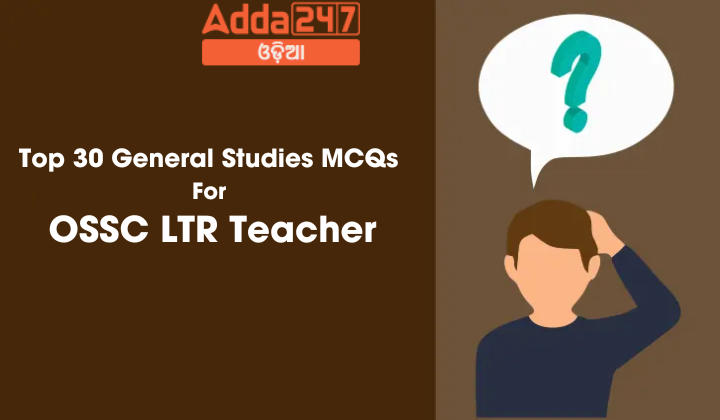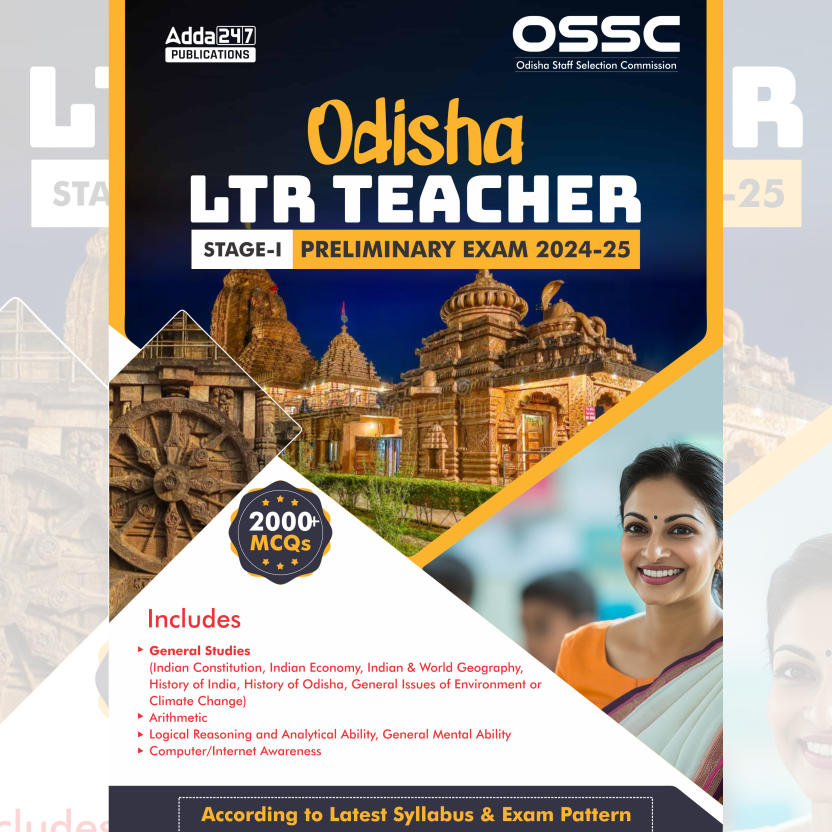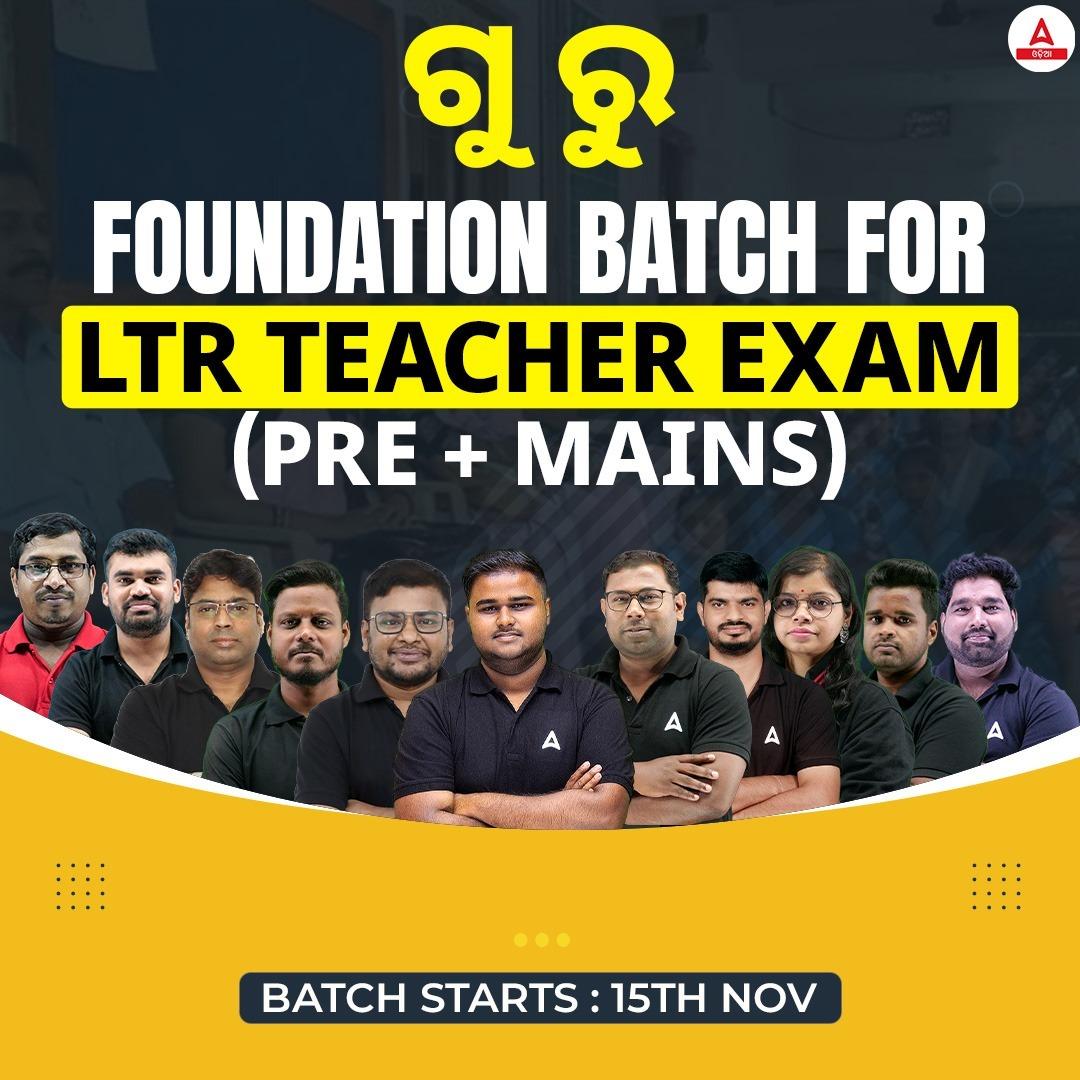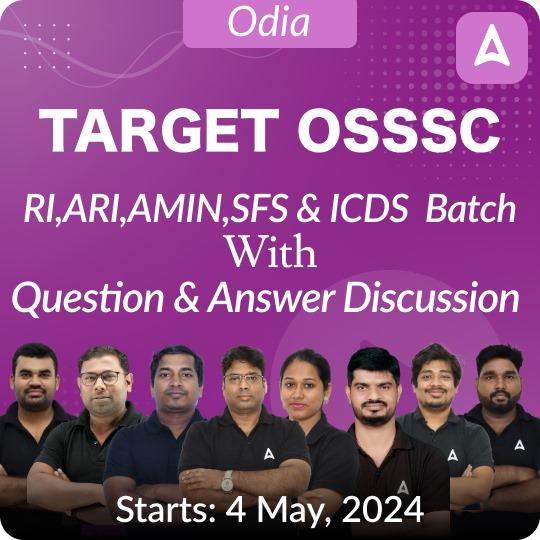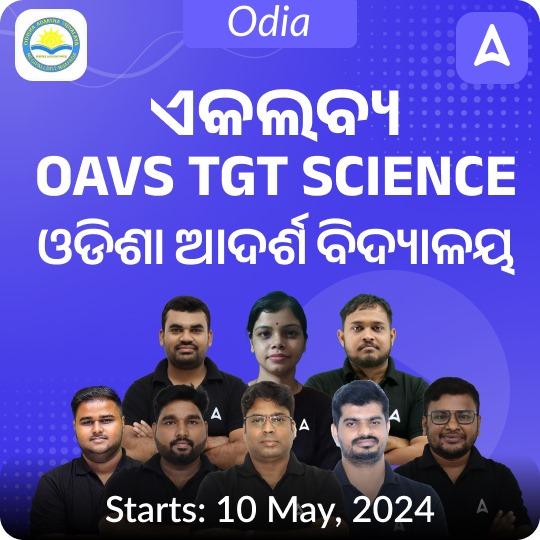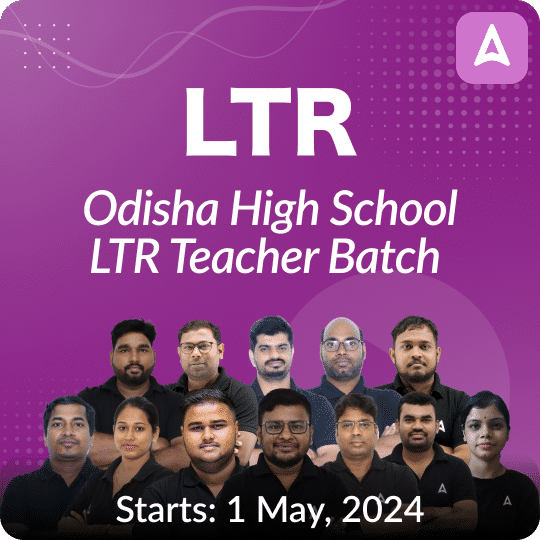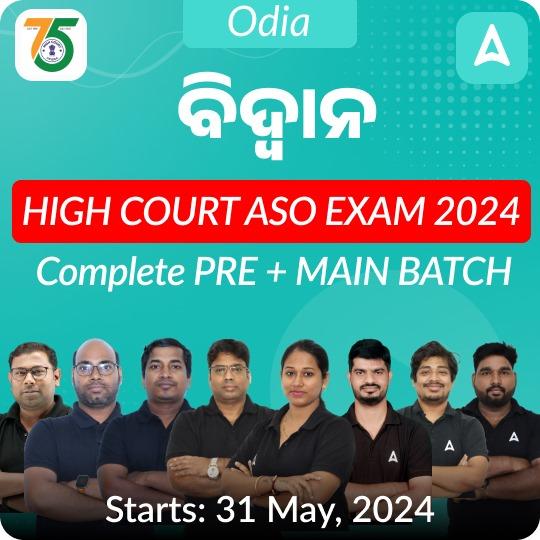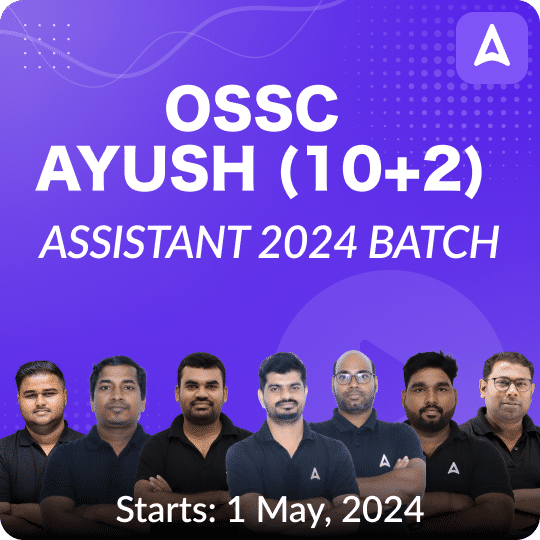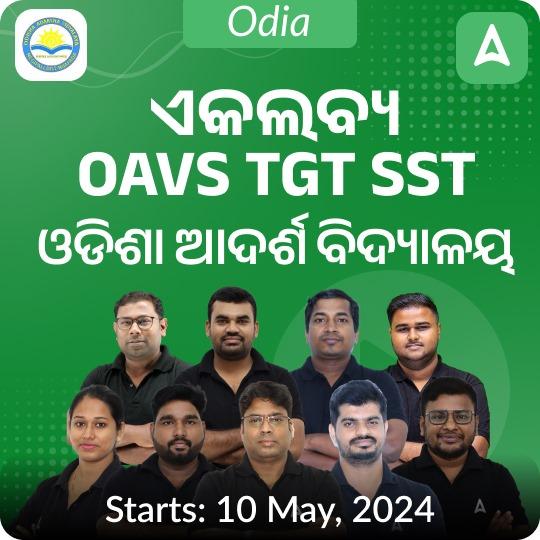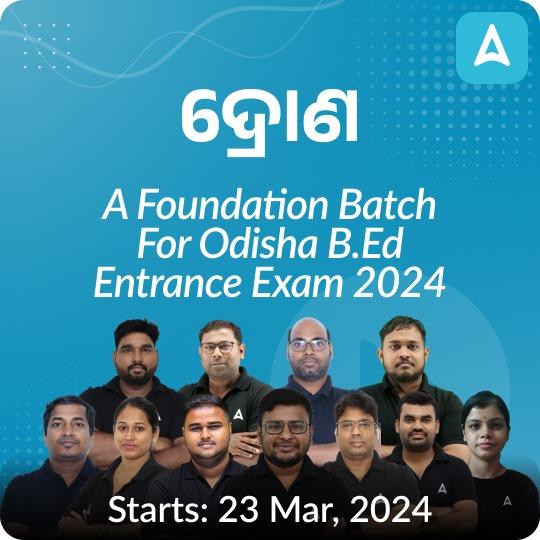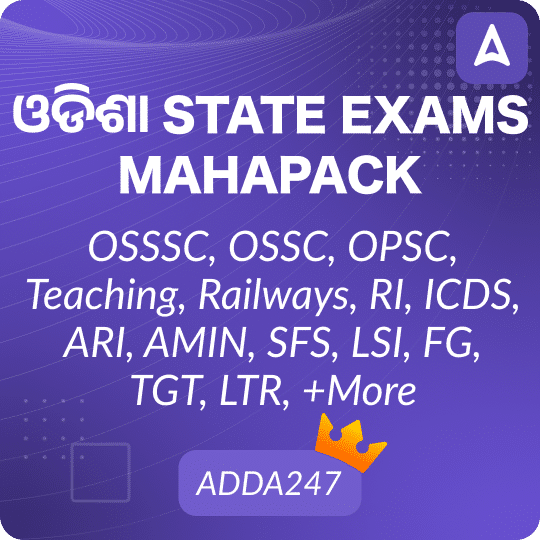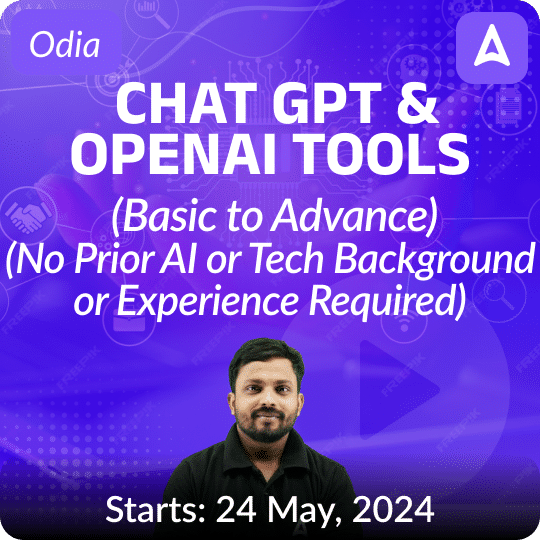The OSSC (Odisha Staff Selection Commission) LTR (Language Teacher Recruitment) exam is a competitive exam conducted to select qualified language teachers in the state of Odisha. The exam includes a General Studies section, which assesses candidates’ knowledge across various domains, including History, Geography, Polity, Economics, General Science, and Current Affairs. Here’s a selection of the top 30 Multiple-Choice Questions (MCQs) that will aid aspirants in their preparation for the OSSC LTR Teacher examination.
Top 30 General Studies MCQs For OSSC LTR Teacher
- Which river is known as the “Ganga of the South”?
A) Godavari
B) Yamuna
C) Krishna
D) Cauvery
Correct Answer: A) Godavari
Explanation: The Godavari River is often referred to as the “Ganga of the South” due to its length and cultural importance, similar to the River Ganga in northern India. It is the second-longest river in India, flowing primarily through the southern states. - The Aravalli Range does not pass through which Indian state?
A) Rajasthan
B) Gujarat
C) Haryana
D) Madhya Pradesh
Correct Answer: B) Gujarat
Explanation: The Aravalli Range is one of the oldest mountain ranges in India and extends primarily through Rajasthan, Haryana, and parts of Delhi. It does not pass through Gujarat, making it the correct answer. - Which is the highest peak in the Western Ghats?
A) Anamudi
B) Kudremukh
C) Nilgiri Hills
D) Mullayanagiri
Correct Answer: A) Anamudi
Explanation: Anamudi is the highest peak in the Western Ghats, standing at 2,695 meters (8,842 feet) above sea level. It is located in the state of Kerala, making it the tallest point in South India. - The Laccadive Islands are also known by which other name?
A) Maldives
B) Andaman and Nicobar Islands
C) Lakshadweep Islands
D) Faroe Islands
Correct Answer: C) Lakshadweep Islands
Explanation: The Laccadive Islands are part of the Union Territory of Lakshadweep in India. Although historically called Laccadive, they are officially known as the Lakshadweep Islands, consisting of several small coral islands in the Arabian Sea. - The Bihu festival is celebrated in which Indian state?
A) Assam
B) Rajasthan
C) Odisha
D) Punjab
Correct Answer: A) Assam
Explanation: Bihu is a major cultural festival in the Indian state of Assam. It marks the Assamese New Year and is celebrated in three forms: Rongali Bihu (spring), Bhogali Bihu (harvest), and Kongali Bihu (dark period). - Who conducted the exploration that exposed the pre-historic sites of Odisha in 1875?
(a) Paramananda Acharya
(b) C. Worman
(c) Valentine Bali
(d) R.P. Chanda
Ans: (c) Valentine Bali
Solution: Valentine Bali’s exploration in 1875 at Angul, Talcher, Dhenkanal, and Bursapalli played a crucial role in exposing the pre-historic sites of Odisha, contributing significantly to the understanding of the region’s ancient history. - The famous paleolithic site at Kulina was discovered by:
(a) B.B. Lal
(b) Paramananda Acharya and C. Worman
(c) R.P. Chanda
(d) K.K. Basa
Ans: (b) Paramananda Acharya and C. Worman
Solution: Paramananda Acharya of Mayurbhanj and C. Worman of Harvard University discovered the famous paleolithic site at Kulina, marking an important discovery in the study of Odisha’s pre-history. - The Asokan rock art and edicts were discovered at:
(a) Ratnagiri
(b) Udayagiri
(c) Dhauli
(d) Lalitgiri
Ans: (c) Dhauli
Solution: The discovery of Asokan rock art at Dhauli, along with his edicts at Dhauli and Jaugada, provided significant insights into the history of Kalinga during the 3rd century B.C. - Which site is identified as the capital city of Kharavela?
(a) Jaugada
(b) Sisupalgarh
(c) Ratnagiri
(d) Lalitgiri
Ans: (b) Sisupalgarh
Solution: The excavation at Sisupalgarh led by B.B. Lal in 1949 revealed a fort with impressive gateways, which historians identified as Kalinganagari, the capital city of Kharavela. - The recent excavations at Harirajpur were led by:
(a) Devala Mitra
(b) R.K. Moanty
(c) Monica L. Smith
(d) K.K. Basa
Ans: (d) K.K. Basa
Solution: K.K. Basa led the recent excavations at Harirajpur, which uncovered many unexplored aspects of the ancient history of Odisha. - Which of the following sites is part of the “Diamond Triangle” of Odisha?
(a) Sisupalgarh
(b) Konarka
(c) Lalitgiri
(d) Harirajpur
Ans: (c) Lalitgiri
Solution: Ratnagiri, Udayagiri, and Lalitgiri are collectively known as the “Diamond Triangle” of Odisha, significant for their archaeological remains related to Buddhism and Brahmanic religion. - The temples of Odisha developed in which style of architecture?
(a) Dravidian
(b) Nagara
(c) Vesara
(d) Kalingan
Ans: (d) Kalingan
Solution: The temples of Odisha developed in the Kalingan style of architecture, which is characterized by the Sikhara or rekha (curvilinear) form, marking its origin in the 6th-7th century A.D. - Which temple marked the perfection of the Kalingan style of architecture?
(a) Lingaraja Temple
(b) Muktesvara Temple
(c) Jagannath Temple
(d) Konarka Sun Temple
Ans: (d) Konarka Sun Temple
Solution: The Konarka Sun Temple, also known as the Black Pagoda, marked the perfection of the Kalingan style of architecture and iconography in Odisha, surpassing the other temples in the region. - The site of Podagarh in Navarangpur district is associated with which ancient dynasty?
(a) Nalas
(b) Sarabhapuriyas
(c) Somavamsis
(d) Gangas
Ans: (a) Nalas
Solution: Podagarh, located in the Navarangpur district, is associated with the Nalas dynasty, with the site serving as their capital town, Puskari. - Which group of temples marked the early phase of temple architecture in Odisha?
(a) Gokarnesvara Temples
(b) Parsuramesvara Group
(c) Laxmanesvara, Bharatesvara, and Satrughnesvara Group
(d) Simhaprastha Mahavihara
Ans: (c) Laxmanesvara, Bharatesvara, and Satrughnesvara Group
Solution: The Laxmanesvara, Bharatesvara, and Satrughnesvara group of temples marked the early phase of temple architecture in Odisha, laying the foundation for later developments in the Kalingan style. - Who received the Nobel Prize in Physics 2023 for experimental methods generating attosecond pulses of light for studying electron dynamics in matter?
(a) Moungi Bawendi
(b) Ferenc Krausz
(c) Katalin Karikó
(d) Anne L’Huillier
Correct Answer: (b) Ferenc Krausz - Which Nobel Prize in 2023 is awarded for the discovery and synthesis of quantum dots?
(a) Chemistry
(b) Physics
(c) Physiology or Medicine
(d) Literature
Correct Answer: (a) Chemistry - Who are the laureates for the Nobel Prize in Physiology or Medicine 2023, recognized for their contributions to the development of effective mRNA vaccines against COVID-19?
(a) Claudia Goldin
(b) Jon Fosse
(c) Katalin Karikó and Drew Weissman
(d) Narges Mohammadi
Correct Answer: (c) Katalin Karikó and Drew Weissman - Jon Fosse received the Nobel Prize in 2023 for:
(a) Quantum dots synthesis
(b) Electron dynamics in matter
(c) Nucleoside base modifications
(d) Innovative plays and prose giving voice to the unsayable
Correct Answer: (d) Innovative plays and prose giving voice to the unsayable - Which Nobel Laureate was awarded the Peace Prize in 2023 for the fight against the oppression of women in Iran and the promotion of human rights and freedom?
(a) Rabindranath Tagore
(b) Mother Teresa
(c) Narges Mohammadi
(d) Kailash Satyarthi
Correct Answer: (c) Narges Mohammadi - Who has the authority to declare a financial emergency in the country?
Options:
(a) Finance Minister of India
(b) President of India
(c) Lok Sabha Speaker
(d) Chief Justice of Supreme Court
Correct Answer: (b) President of India
Explanation: According to Article 360 of the Indian Constitution, only the President of India has the power to declare a financial emergency if the country’s financial stability is threatened. - Which part of the Indian Constitution contains the emergency provisions?
Options:
(a) XVIII
(b) XVI
(c) XVII
(d) XV
Correct Answer: (a) XVIII
Explanation: Part XVIII (Articles 352 to 360) of the Indian Constitution deals with emergency provisions, including National Emergency, President’s Rule, and Financial Emergency. - Which article of the Indian Constitution addresses provisions for a financial emergency?
Options:
(a) Article 352
(b) Article 356
(c) Article 360
(d) None of the above
Correct Answer: (c) Article 360
Explanation: Article 360 of the Indian Constitution gives the President of India the authority to declare a financial emergency in the country. - When was the National Emergency first declared in India?
Options:
(a) 1965
(b) 1991
(c) 1975
(d) Never.
Correct Answer: (d) Never.
Explanation: The question specifically asks about a financial emergency, not a national emergency. A financial emergency has never been declared in India. - Which statement is incorrect regarding a financial emergency?
Options:
(a) The declaration of financial emergency requires the approval of both houses of parliament.
(b) The resolution approving the declaration of financial emergency should be passed by a special majority by either House of Parliament.
(c) Once approved by both houses, the financial emergency continues indefinitely until revoked by the President.
(d) The declaration of financial emergency can be canceled by the President at any time without parliamentary approval.
Correct Answer: (b) The resolution approving the declaration of financial emergency should be passed by a special majority by either House of Parliament.
Explanation: The approval for a financial emergency does not require a special majority, only a simple majority is needed. - Under what circumstances can a financial emergency be declared?
Options:
(a) Only during financial stability in the country.
(b) In case of a threat to India’s financial stability or any part of its territory.
(c) Both conditions mentioned in (a) and (b).
(d) Neither (a) nor (b).
Correct Answer: (b) In case of a threat to India’s financial stability or any part of its territory.
Explanation: A financial emergency can only be declared if there is a threat to India’s financial stability, not during periods of financial stability. - Which of the following is incorrectly matched with its related article?
Options:
(a) Article 352: National Emergency
(b) Article 368: Constitutional amendment
(c) Article 356: Emergency in the state (President’s rule)
(d) Article 358: Financial emergency in the country
Correct Answer: (d) Article 358: Financial emergency in the country
Explanation: Article 358 deals with the suspension of the rights guaranteed by Article 19 during a national emergency. Financial emergency is covered by Article 360, not 358. - Which constitutional amendment gave the President the power to declare a national emergency in a specific part of India?
Options:
(a) 38th
(b) 40th
(c) 42nd
(d) 62nd
Correct Answer: (c) 42nd
Explanation: The 42nd Amendment to the Constitution in 1976 allowed the President to declare a national emergency in a specific part of India instead of the entire country. - Which of the following is not an effect of a financial emergency?
Options:
(a) The executive authority of the center is expanded to issue financial orders to any state.
(b) Salaries and allowances of state employees cannot be reduced.
(c) Money bills passed by state legislatures can be reserved for the President’s consideration.
(d) The President can reduce the salary of judges of the Supreme Court and High Court.
Correct Answer: (b) Salaries and allowances of state employees cannot be reduced.
Explanation: During a financial emergency, the central government has the authority to reduce the salaries of government employees, including those of state employees. - A proclamation of financial emergency must be approved by both Houses of Parliament within how many months from the date of its issue?
Options:
(a) 2 months
(b) 3 months
(c) 6 months
(d) 6 weeks
Correct Answer: (a) 2 months
Explanation: As per Article 360, a financial emergency proclamation must receive approval from both Houses of Parliament within two months from the date of issuance to remain valid.

